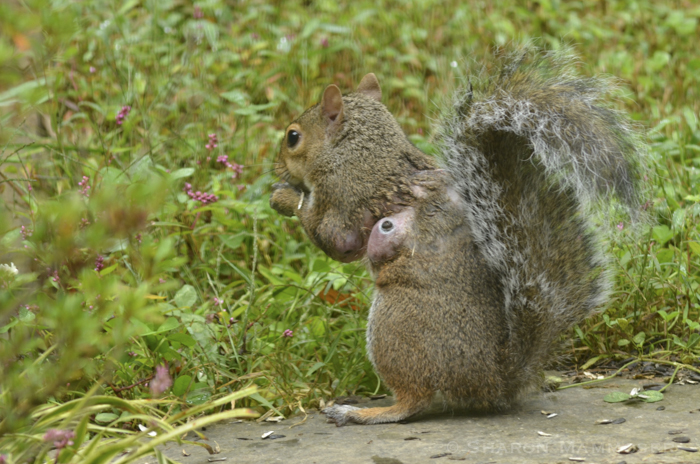Hey, I just want a give a shout out to all of my new friends who joined me last night at The Compleat Naturalist for my Animal Sounds program. I welcome you to my blog and invite you to comment anytime you feel inclined.
When I moved from Weaverville, NC to south Asheville two years ago, I started noticing that many of the gray squirrels in the yard had these weird-looking growths on them. This was alarming to me as I wondered if there was something in the water that was causing what looked like tumors on the poor animals…. and was I in danger too?
Today I can happily report I know the cause of these growths and it is not my water! Instead, these growths, which are called warbles, are the result of a parasitic insect that has a lifecycle dependent on tree squirrels and chipmunks.
The warbles are caused by one of 30 species of Bot fly that live in North America. Evidence of Bot flies has been reported in 20 states and 2 Canadian provinces. These insects resemble a bumblebee, with black bodies and pale yellow thorax and black wings (sorry I don’t have a picture, but you can see one Here.) Unlike bumblebees though, they don’t visit flowers, don’t drink nectar and don’t sting or bite. What they DO is find an unsuspecting host and make themselves at home.
Bot Fly females lay their eggs on tree trunks or in other places where squirrels are likely to be. When a squirrel comes by the eggs are transferred on contact and then, body heat and moisture from the squirrel cause the eggs to hatch. They penetrate through a body opening and migrate to a place where they get comfortable. The first thing they do is cut out a breathing hole, then feed off the squirrel for a few months before exiting through their cut hole and dropping off to burrow into the ground where they will overwinter in the pupa form. When summer returns, they will emerge as adults and start the cycle new.
The good news is that the squirrels for the most part suffer no long term effects from these bothersome insects. At the squirrel’s next molt, the scars will be healed over and their fur will look as good as new again. Whew, that’s very good to know!
Happy weekend! Don’t forget to set your clocks ahead one hour tonight–a wonderful thing as it means spring is right around the corner!
Here is the next Weekly Puzzler.



1 thought on “Weekly Puzzler Answer #50”
Comments are closed.